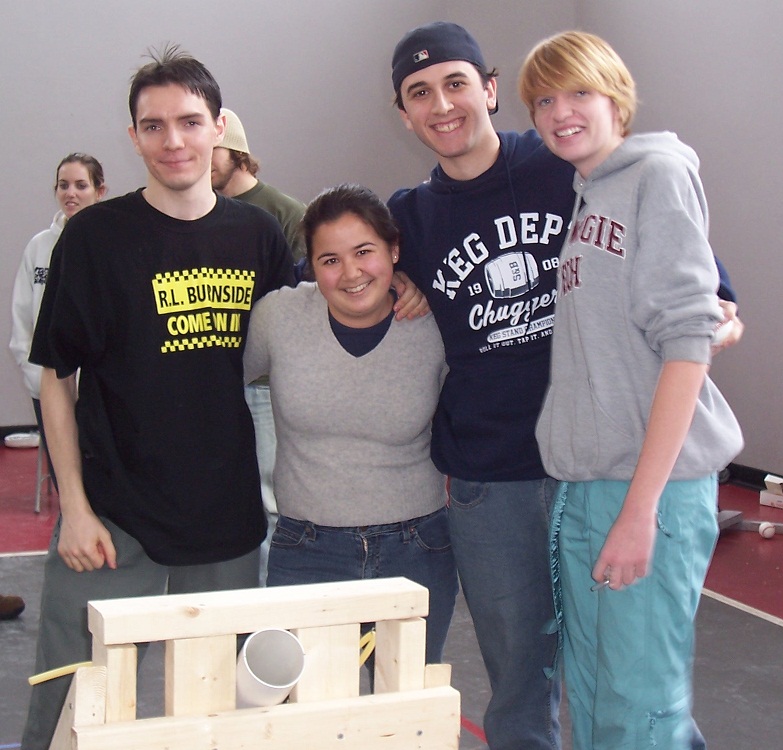All we had to do was fire baseballs into buckets:

We built our mechanism with a stiff frame and precisely interlocking moving parts, yielding repeatable performance and accuracy.
Our souped-up slingshot had five major functional elements:
- the frame, designed for stiffness from wooden 2x4 beams with a fixed firing angle
- the barrel, a PVC pipe slotted along its length and marked in 1-inch increments
- the sling, a sliding collar around the barrel, with a guide bolt running through it (orthogonal to the pipe axis) which interfaces with the barrel slots
- the rubber, surgical tubing attached between the sliding collar and frame which stores the energy needed to fire the baseball
- arrestor cables, anchoring the sling to the frame

The order of operations is as follows:
- a "loader" breech-loads the baseball, dropping into the end of the barrel
- a "gunner" pulls the sling back to a specific mark on the barrel, stretching the rubber surgical tubing
- the sling is released, accelerating the baseball through the barrel
- the arrestor cables stop the sling from traveling past the zero-mark, allowing for consistent follow-through and dissipating excess energy to the frame instead of the brittle PVC barrel
- the baseball continues traveling out of the barrel in a 45 degree arc
- a "spotter" notes the distance travelled and tells the "gunner" how to adjust sling pull distance
- an additional "spotter" stands behind the mechanism to detect when it needs to be rotated left or right
This delegation of duties allows each team member to specialize in a single task, resulting in a very high firing rate.
26 teams built a mechanism of their own design and competed to see who could hit three targets the fastest.
Our team created a reliable design with simple operation and a high firing rate, and practiced our roles thoroughly.
We won 1st place.



